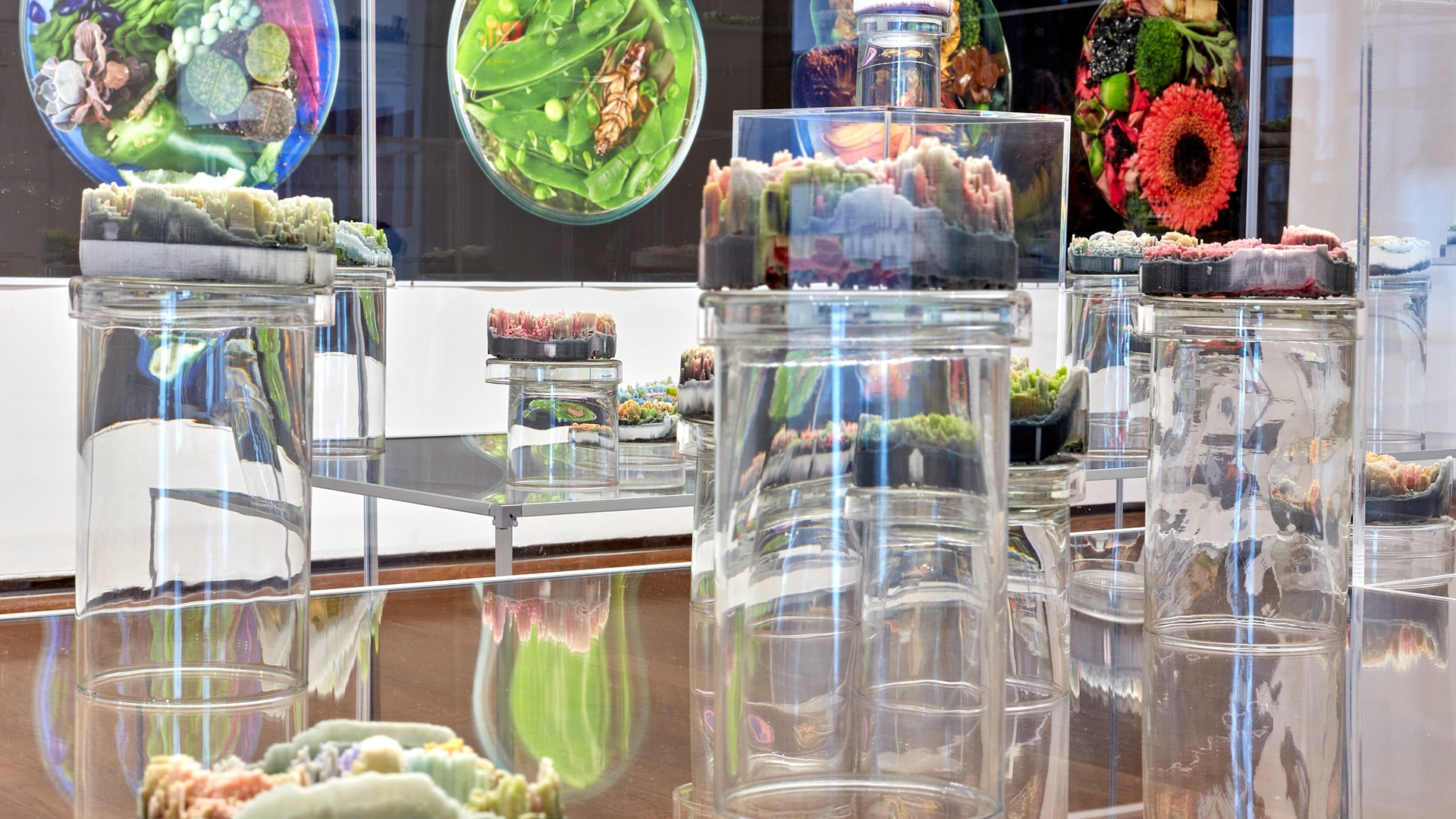Blueprints for Our Future Planet as It Moves Toward Extinction
This article by Anthony Hawley originally appeared on Hyperallergic.com. Read the full article HERE.
Two artists wrestle with the intersections of technology and massive ecological shifts brought on by the Anthropocene.
SYRACUSE, NY — At the Everson Museum of Art in Syracuse, Frank Gillette and Suzanne Anker are having concurrent, distinct solo shows that nonetheless grow into a single umbrella project, Strata. The framework fits perfectly: what could be better for two artists wrestling with the intersections of technology and massive ecological shifts, brought on by the Anthropocene, than a new species of exhibition format.
Anker has her own show, as does Gillette, each with a separate title: Suzanne Anker: 1.5° Celsius, and Frank Gillette: Excavations and Banquets. But the intelligent curatorial layout, by DJ Hellerman and David Ross, is such that the shows cohabitate, creating a single environment. Viewers pass through one large room of Gillette’s work, then two of Anker’s, only to end with another space saturated with Gillette’s. Two bridge-ways connect the museum’s massive rooms. In these narrow passages, viewers find six blueprint-like digital diagrams produced collaboratively by the two artists. Also titled “Strata,” the speculative drawings (from 2018) combine fragments of architectural monuments with bio-diverse growths to breed new locales — perhaps imaginary places we will come to populate as our planet moves rapidly towards extinction.
Taken as a whole, Strata (the exhibition) reads a bit like one of these drawings realized in museum format: a system of works dedicated to speculative ecologies at once urgent, sobering, and playful. Both Anker and Gillette manage this while avoiding didacticism. The delicate choreography of Gillette’s “Track/Trace” (1972) — a pyramidal structure of 15 video monitors — feels as prescient as ever with its live surveillance footage of the museum galleries transmitted to the monitors. “Track/Trace” forces us to confront a haunting blend of ourselves in the present and immediate past, to look at ourselves in the monitors while having just left.
Anker also tinkers with live material in “Astroculture” (2015), a sculpture in which plants grow inside metal containers lit by red and blue LED light stimulating photosynthesis. Tended to daily over the course of the exhibition, “Astroculture” models sunless futures in which we intuit viable ways to grow food — futures that will perhaps be too dim for us to be wasting time worrying about art markets, pedigree, and artworks made with bloated auction prices in mind.
Remarkable moments of interplay between repetition, replication, delay, and decay run throughout Strata. In the second room of Anker’s work, big, velvety C-Prints of microcosmic wonders line the walls, while a large glass case sits at the center housing dozens of small specimens. Only upon closer inspection does one find that the specimens in “Remote Sensing” (2014–16) are actually small 3D-printed models of abstracted versions of the photographs. Colorful, crystalline extrusions shoot upward from the replicas reminding viewers that the process of “remote sensing” refers to data collection of distant terrain by satellite. As the details of the world in the petri dish get obscured, a different set of vertical coordinates comes to life through the digital “apprehension” of other information. These look almost like studies for other worlds out of an Ursula K. LeGuin novel. Indeed, if Anker’s show title 1.5° Celsius — the projected increase in global temperature between 2030 and 2052 — rings true, we may be looking to “Astroculture,” “Remote Sensing,” and “Strata” for other blueprints.
Suzanne Anker: 1.5° Celsius and Frank Gillette: Excavations and Banquets continue at the Everson Museum of Art (401 Harrison St, Syracuse, New York) through April 21. The exhibitions were curated by DJ Hellerman and David Ross.


